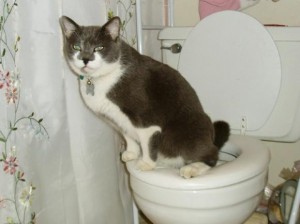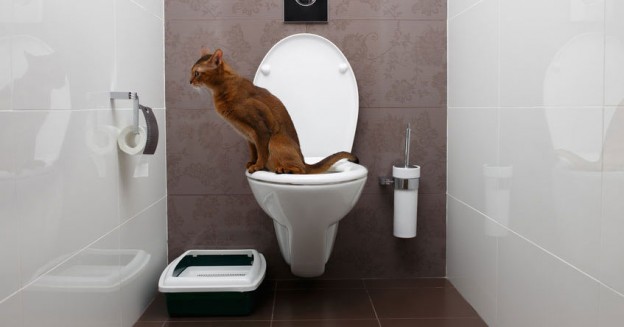Potential Issues of Flushing Cat Poop Down Your Toilet - Protect Your Pipes
Potential Issues of Flushing Cat Poop Down Your Toilet - Protect Your Pipes
Blog Article
Just about everyone may have their unique opinion involving Can You Flush Cat Poop Down The Toilet?.

Intro
As cat owners, it's important to be mindful of just how we dispose of our feline friends' waste. While it might appear convenient to flush pet cat poop down the toilet, this method can have destructive effects for both the atmosphere and human health.
Alternatives to Flushing
Luckily, there are much safer and much more liable ways to get rid of cat poop. Think about the following options:
1. Scoop and Dispose in Trash
The most typical approach of disposing of feline poop is to scoop it right into a biodegradable bag and throw it in the garbage. Be sure to make use of a dedicated clutter inside story and dispose of the waste without delay.
2. Usage Biodegradable Litter
Go with biodegradable cat litter made from materials such as corn or wheat. These litters are environmentally friendly and can be safely thrown away in the garbage.
3. Hide in the Yard
If you have a backyard, take into consideration hiding feline waste in a designated location away from vegetable gardens and water resources. Make sure to dig deep adequate to avoid contamination of groundwater.
4. Mount a Pet Waste Disposal System
Invest in a family pet garbage disposal system particularly made for cat waste. These systems make use of enzymes to break down the waste, reducing odor and environmental impact.
Health Risks
In addition to environmental worries, flushing pet cat waste can additionally present wellness dangers to humans. Pet cat feces may consist of Toxoplasma gondii, a parasite that can trigger toxoplasmosis-- a potentially serious illness, especially for expecting ladies and people with damaged body immune systems.
Environmental Impact
Flushing cat poop introduces damaging microorganisms and parasites into the supply of water, posing a considerable risk to aquatic communities. These pollutants can negatively affect marine life and concession water quality.
Conclusion
Responsible family pet ownership extends beyond supplying food and sanctuary-- it also involves correct waste management. By refraining from flushing pet cat poop down the commode and choosing alternate disposal techniques, we can lessen our ecological impact and shield human wellness.
Why Can’t I Flush Cat Poop?
It Spreads a Parasite
Cats are frequently infected with a parasite called toxoplasma gondii. The parasite causes an infection called toxoplasmosis. It is usually harmless to cats. The parasite only uses cat poop as a host for its eggs. Otherwise, the cat’s immune system usually keeps the infection at low enough levels to maintain its own health. But it does not stop the develop of eggs. These eggs are tiny and surprisingly tough. They may survive for a year before they begin to grow. But that’s the problem.
Our wastewater system is not designed to deal with toxoplasmosis eggs. Instead, most eggs will flush from your toilet into sewers and wastewater management plants. After the sewage is treated for many other harmful things in it, it is typically released into local rivers, lakes, or oceans. Here, the toxoplasmosis eggs can find new hosts, including starfish, crabs, otters, and many other wildlife. For many, this is a significant risk to their health. Toxoplasmosis can also end up infecting water sources that are important for agriculture, which means our deer, pigs, and sheep can get infected too.
Is There Risk to Humans?
There can be a risk to human life from flushing cat poop down the toilet. If you do so, the parasites from your cat’s poop can end up in shellfish, game animals, or livestock. If this meat is then served raw or undercooked, the people who eat it can get sick.
In fact, according to the CDC, 40 million people in the United States are infected with toxoplasma gondii. They get it from exposure to infected seafood, or from some kind of cat poop contamination, like drinking from a stream that is contaminated or touching anything that has come into contact with cat poop. That includes just cleaning a cat litter box.
Most people who get infected with these parasites will not develop any symptoms. However, for pregnant women or for those with compromised immune systems, the parasite can cause severe health problems.
How to Handle Cat Poop
The best way to handle cat poop is actually to clean the box more often. The eggs that the parasite sheds will not become active until one to five days after the cat poops. That means that if you clean daily, you’re much less likely to come into direct contact with infectious eggs.
That said, always dispose of cat poop in the garbage and not down the toilet. Wash your hands before and after you clean the litter box, and bring the bag of poop right outside to your garbage bins.
https://trenchlesssolutionsusa.com/why-cant-i-flush-cat-poop/

I'm very excited about How to Dispose of Cat Poop and Litter Without Plastic Bags and I really hope you enjoyed reading the entire blog entry. Sharing is caring. You won't know, you may be doing someone a favor. Thank you for going through it.
Make An Appointment Report this page